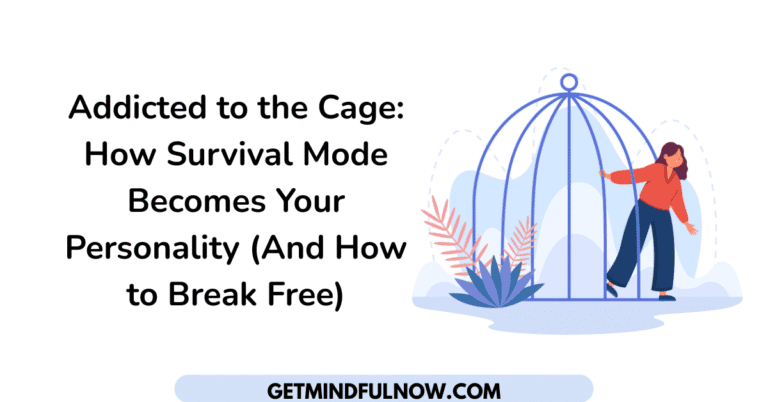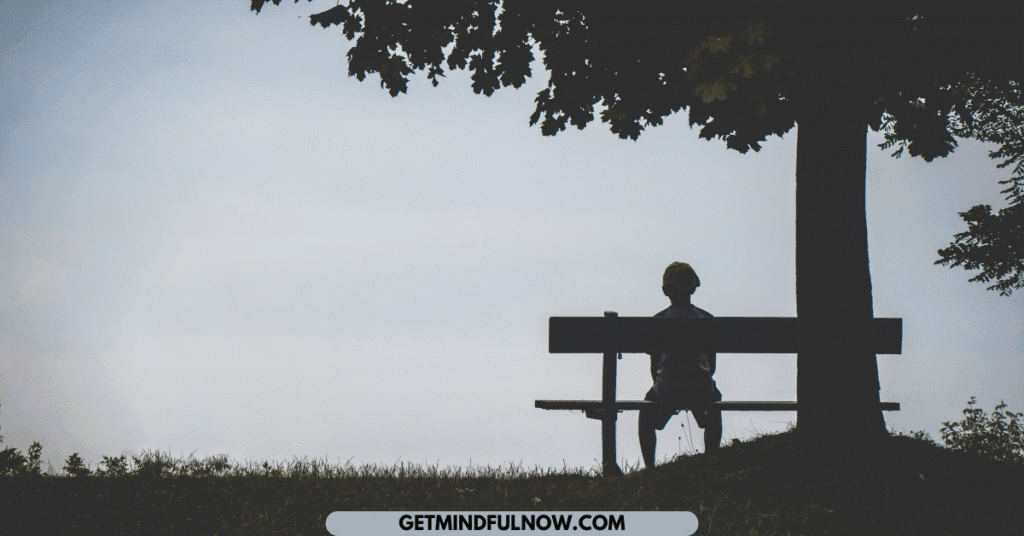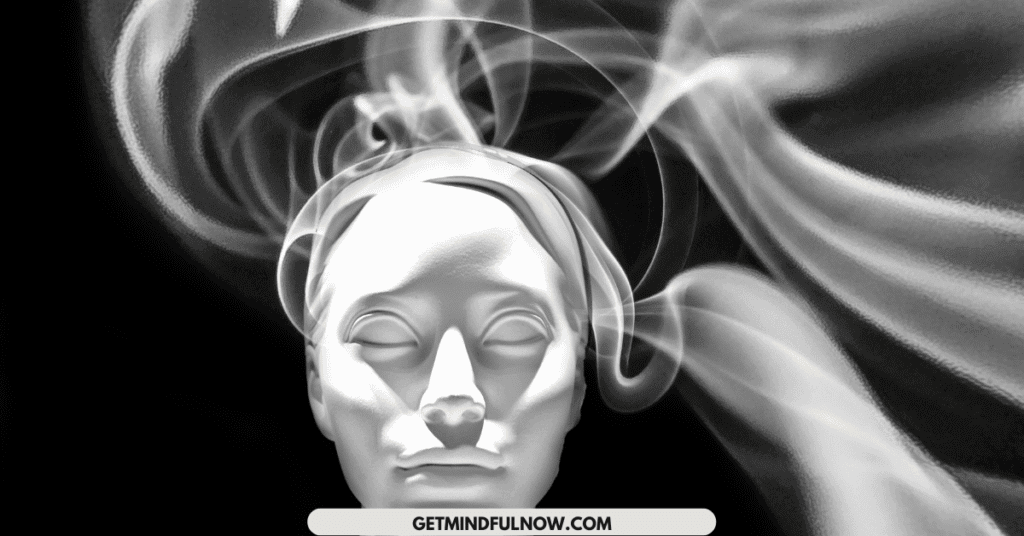Have you ever had that moment where someone asked how you’re doing, and you gave your usual response: “Just surviving.” And you didn’t even realize how real that answer was…
I used to think survival mode(fight-or-flight response) was something you snap into during a crisis. You get through it, the storm passes, and you return to normal. Turns out, survival mode has a nasty habit of moving in, rearranging the furniture, and making itself home.
And the worst part? You stop noticing.
I didn’t. For years, I lived in this high-functioning version of fight-or-flight. My body was always tense, sick from viruses and bacteria. I couldn’t relax, not really. Even during sleep, my mind raced. And the world praised me for being so responsible, so efficient, so driven.
But inside, I was running on fumes.
The Box You Don’t Know You Live In
Survival mode is when your brain and body stay in a constant state of fight-or-flight long after the real danger has passed. It’s your nervous system acting like you’re still under threat, pumping stress chemicals and narrowing your focus to just getting through the day. Living this way rewires your brain to only think inside a box,… a box built with the bricks of your past pain, stress responses, and emotional habits. It’s sneaky, too. It mimics your voice. It sounds like you.
You start believing your anxious thoughts are just part of your personality. You call yourself “realistic” when you’re actually terrified. You think you’re just someone who “overthinks things,” but truthfully? That’s your amygdala(fear center) on repeat, feeding your nervous system a diet of danger, even when you’re in your bed at 2 a.m.
We mistake our emotional reactions for our identity. Because those reactions have been reinforced by years of chemical familiarity. You worry not just because you care but because your body is chemically addicted to worry.
And it happens slowly. So slowly that you don’t notice when the cage locks.
Survival Mode is a Biochemical Habit
This is not a mindset issue. It’s a full-body experience.
When you’re in survival mode, your brain prioritizes survival over healing, growth, or joy. Stress hormones like cortisol and adrenaline become your daily brew. Your digestion slows, your immune system takes a hit, and your frontal lobe… the one responsible for creativity, emotional stability, logic, and vision, basically clocks out.
You’re left with tunnel vision. All you can think about is making it through the day. Not planning your future, and if you envision, it’s only worst case scenarios. Not changing your habits. Just enduring.
And the more you live like that, the more your brain adapts to it. It hardwires stress. It turns chemical imbalance into a personality trait.
That’s when things get dangerous.
You stop dreaming and believing change is possible.
You cling to old patterns because, at least, they’re familiar.
This is how people stay stuck in jobs that rot them from the inside. Or relationships that feel like walking on eggshells. Or routines that keep their hearts flatlining instead of beating.
Your Nervous System is Not a Robot
I want to tell you something your body might be dying to hear:
You don’t have to earn rest and joy.
You’re allowed to feel safe, even when nothing outside you changes.
You were not designed to survive endlessly. But the world we live in, with its alarms, deadlines, notifications, and unresolved childhood wounds, has made survival your new default.
Real talk?
You cannot manifest a better life while your body believes it’s being chased by a bear. Because your chemistry will override your intention every time.

Real Life Isn’t Safe—But Your Mind Can Be
I’ve worked with people who had every reason to be stuck.
Childhood trauma. Abandonment. Chronic illness. Failed dreams. Years of suppressed anger.
And I’ve seen them bloom. But not because they “got positive” or “tried gratitude.”
They trained their minds to feel safe in the present moment. And that shifted everything.
A woman I worked with used to cry every time she had to check her emails. Her body associated the inbox with punishment. Her ex-boss would send humiliating messages at 2 a.m. for years. No talk therapy helped. Because her nervous system still believed the threat was real.
Through knowledge, breath, rewiring meditation, journaling, and body awareness, she taught her body a new language.
A language of peace.
She didn’t just change her thoughts, but also changed her chemistry.
The Body Doesn’t Lie, But It Can Be Re-Taught
Research backs this up.
Studies show chronic stress reshapes the amygdala, shrinks the hippocampus, and weakens immune function.
One study from Carnegie Mellon University showed that people under chronic stress were more likely to get sick after being exposed to a virus.
Another study by Dr. Sonia Lupien found that stress in childhood can alter the size and function of the brain well into adulthood.
This isn’t emotional fluff. It’s biology.
But the same research also shows that mindfulness, meditation, deep breathing, and elevated emotions reshape the brain and bring the body back to homeostasis, and heal it.
Your body remembers trauma. But it can also remember joy, safety, and trust. neurologically it is same.
You just have to repeat those enough to make it stick.
How I Started to Break the Loop
I’ve battled gut issues, fatigue, strange symptoms doctors couldn’t explain, and the weight of emotions I didn’t know I was carrying.
Nothing changed until I realized: my body didn’t trust me.
I had lived too long in emergency mode. I didn’t know how to just be.
So, I practiced.
I sat with my breath. I listened to silence. I let my tears come without fixing them.
I treated joy like medicine.
I learned how to recognize when I was spiraling and gently pull myself back with curiosity instead of shame.
I stopped identifying with every thought that popped into my head.
I stopped calling anxiety “me.”
The Brain Can’t Heal in a War Zone
You and I both know there are real-world pressures. Bills, deadlines, heartbreaks.
But the question is: do you want to keep living like your entire life is a crisis?
Because your brain is listening.
You can be busy without being in emergency mode.
You can chase your goals without killing yourself inside.
But not until you start choosing safety as your baseline. And no, that doesn’t come from control. It comes from learning how to regulate your nervous system. From sitting with discomfort. From re-training your chemistry.
4 Signs You’re Addicted to Survival Mode
- You can’t relax unless everything is done. (Spoiler: it never is.)
- You feel guilty when you’re not being “productive.”
- You rehearse worst-case scenarios in your head 24/7.
- You can’t remember the last time you felt fully present.
Here’s What You Can Start Doing — A Simple Guide to Rewire Your Survival Brain
- Breathing + Safety Visualization
Find a quiet spot and take slow, 25 deep breaths, inhale from nose, exhale through mouth. As you breathe, imagine a place where you feel completely safe. It could be a beach, a favorite chair, or a memory from childhood. Let yourself sink into that scene. As you slip into slower alpha and theta brainwaves, your body will begin to learn what safety feels like, not just your mind. - Journaling to Hear Yourself
Set a timer for 10 minutes and write without editing. Don’t try to solve your problems, just let your thoughts spill out. This clears mental clutter and reveals patterns your survival brain hides. - Meditation for Safety, Not Escape
Choose a short daily meditation where your only goal is to feel safe in your body. Notice the sensations of calm, even if they’re small. The more you practice, the more your nervous system adopts safety as its new normal. - Future Visualization During Meditation
While in meditation, picture a future where you’re free from the patterns of survival mode. But don’t just see it, feel it. Imagine what it’s like in your body to live that life. The slower brainwaves from meditation allow this feeling to imprint beyond the conscious mind. - Micro-Moments of Joy
Schedule tiny acts of joy into your day, a favorite song, a warm drink, a walk in fresh air. These moments aren’t “nice-to-have.” They’re chemical retraining for your body, proving that life can feel safe and good.
Change doesn’t come from forcing. It comes from remembering who you were before survival became your only language.
Final Thoughts
You are not your stress. You are not your past reactions. And you are definitely not the personality you built to survive what once broke you.
But if you want to become something new, you’ll have to get uncomfortable. You’ll have to leave behind the identity that chaos built.
This path isn’t easy, but you don’t have to walk it alone.
I take sessions with people who are ready to step out of survival mode and start building a life that actually feels good inside. Appointments are available on my homepage.
And if this stirred something in you, subscribe to my newsletter.
I send weekly doses of truth, neuroscience, tools, and reminders that you’re not crazy. You’re just healing.
Also, follow me on Threads. That’s where I say the things that Instagram can’t handle.
Let’s rebuild you from the inside out. It starts now.








